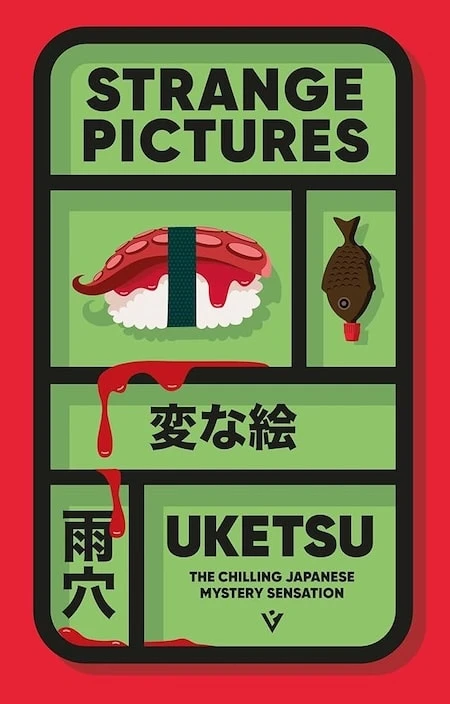
Strangely hurried narratives
The equivalent of a ‘reel’ in the world of books—Spoiler warning
The best way to describe Strange pictures is to invite you to think of ‘reels’ on Instagram or ‘shorts’ on Youtube. Every review I have seen of this work praises it greatly, and as far as mysteries go there is much to like in this novel. Alas there is more to a mystery novel than the retelling, no matter how clever. And in that sense Uketsu’s Strange Pictures stumbles: its pace barely lets up but in a bad way; it opens a door then quickly addresses it, it refuses to let readers sit in discomfort and things are wrapped up and set aside as quickly as they are introduced.
This book therefore reminded me of a ‘reel’ on social media, of extremely short content catering to flimsy attention spans, that does not call upon the reader to think about the characters, their circumstances, events or indeed much of the mystery itself. But if you ever found yourself unable to sit with a longer whodunit, Strange pictures may be the ideal place to begin.
Do not let my criticism deter you from reading this book. This book is by no means bad. Think of it as airport fiction: it is engaging, it is not too demanding, it gives you mysteries in spurts then resolves them pretty quickly so you can put it down and come back to it any time for the next leg. It is an accessible book in that sense, and the mystery at its heart is interesting even if not rewarding.
This is all a pity because there is so much potential within these pages. This book is about childhood traumas, inescapable cycles, forbidden notions and unending curiosity. So much more could have been made of this had the pictures not been undeservedly given all the credit. ‘Mother’ would have been a better title. In all seriousness, perhaps the best takeaway from this book would be sparing a thought for all the things it says matter-of-factly.
Strange pictures is an engaging book insofar as the mystery itself goes and this is largely because of the jumping perspectives involved. On first glance this keeps you glued, turning page after page, but somewhere past the halfway mark it becomes clear that the changing perspectives are a mask intended to enhance an otherwise straightforward story. There is nothing wrong with this except that it brushes several interesting opportunities for character development under the rug. We are told someone’s cancer returned just to set up the paragraphs that follow immediately after; we are told a psychologist’s perspective on a child’s drawings as though they are conclusive rather than exploratory; we are forcefully shown illustrations of alibi timelines where books with far more complex alibi timelines do just fine describing it—in fact, besides the pictures themselves there are disturbingly too many unnecessary illustrations in this book.
I would have liked to see Naomi Konno’s motivations explored. Surely an underlying current coupled with a few incidents did not turn her exclusively into someone comfortable with murder. What was her life like? What fears did she grapple with when dating Yoshiharu Miura? What did she do to cope or why did she choose to let herself go? There is a certain darkness to this tale that is treated with caution and decency, and yet the fact that it remains underexplored is unfortunate. The manner of storytelling is perhaps the best bit of this book, even thought it becomes clear by chapter two that things will start fitting together like a puzzle. The fourth chapter wraps it all up as promised but it is not in how things come together but in how the most distant threads are connected that the real fun lies.
The cyclic nature of the tale is its most rewarding aspect and while little is spoken of Yuta besides that he was adopted by a trustworthy adult, the signs of a traumatised childhood—just like that of his grandmother’s childhood—persist right to the end. It would not be fair to expect every whodunit to address these questions and one might even argue that it is better left to the reader. But I do think it is important to know before you dive in that the story is the soul of this novel and not the characters. If you are indeed interested in the mechanics of putting together such a tale, the procedural aspect of tying narrative threads together, then Strange pictures can be a strangely satisfying read on your commute. Seek a bit more about its interesting characters and you will be sadly let down.